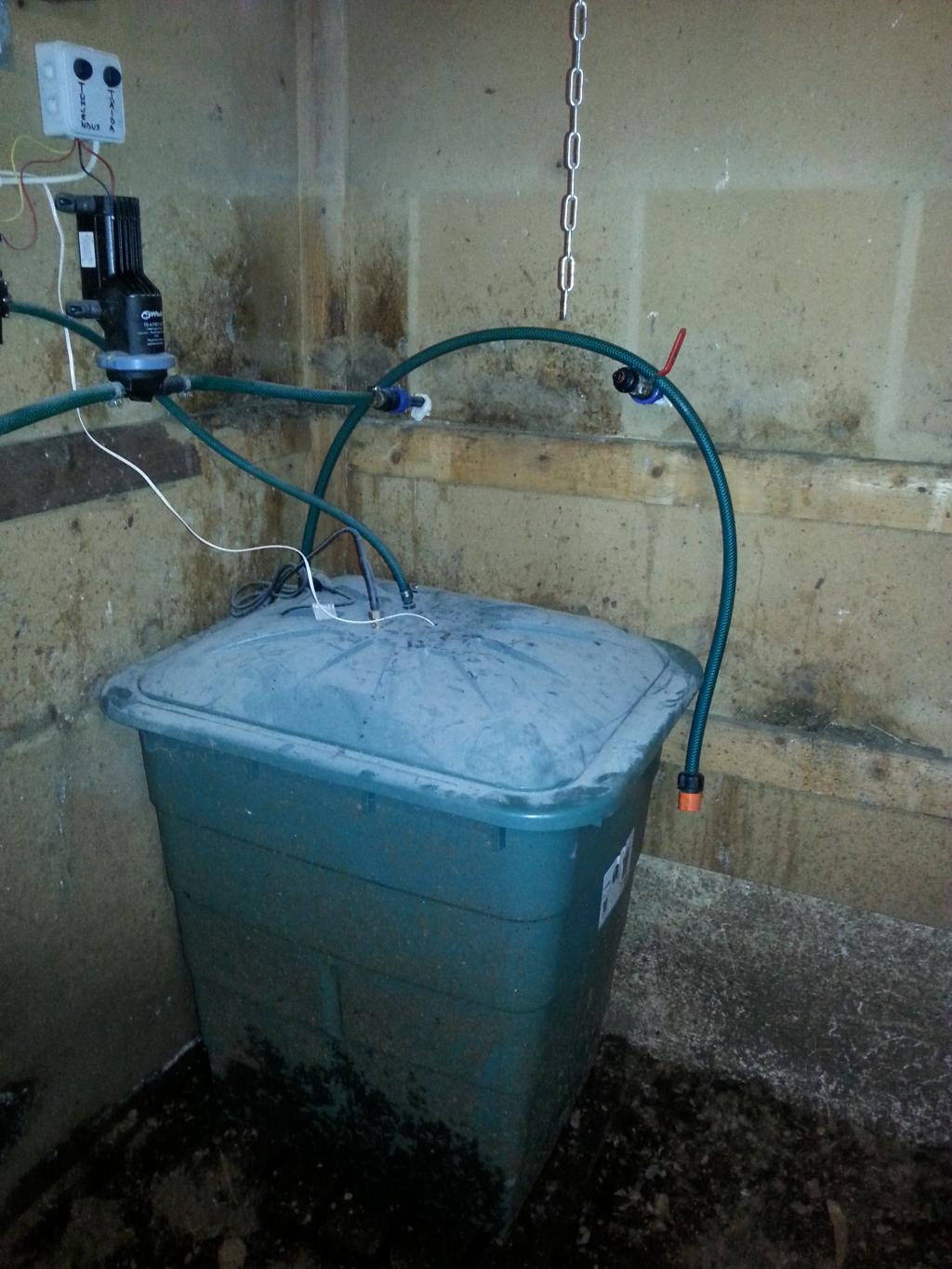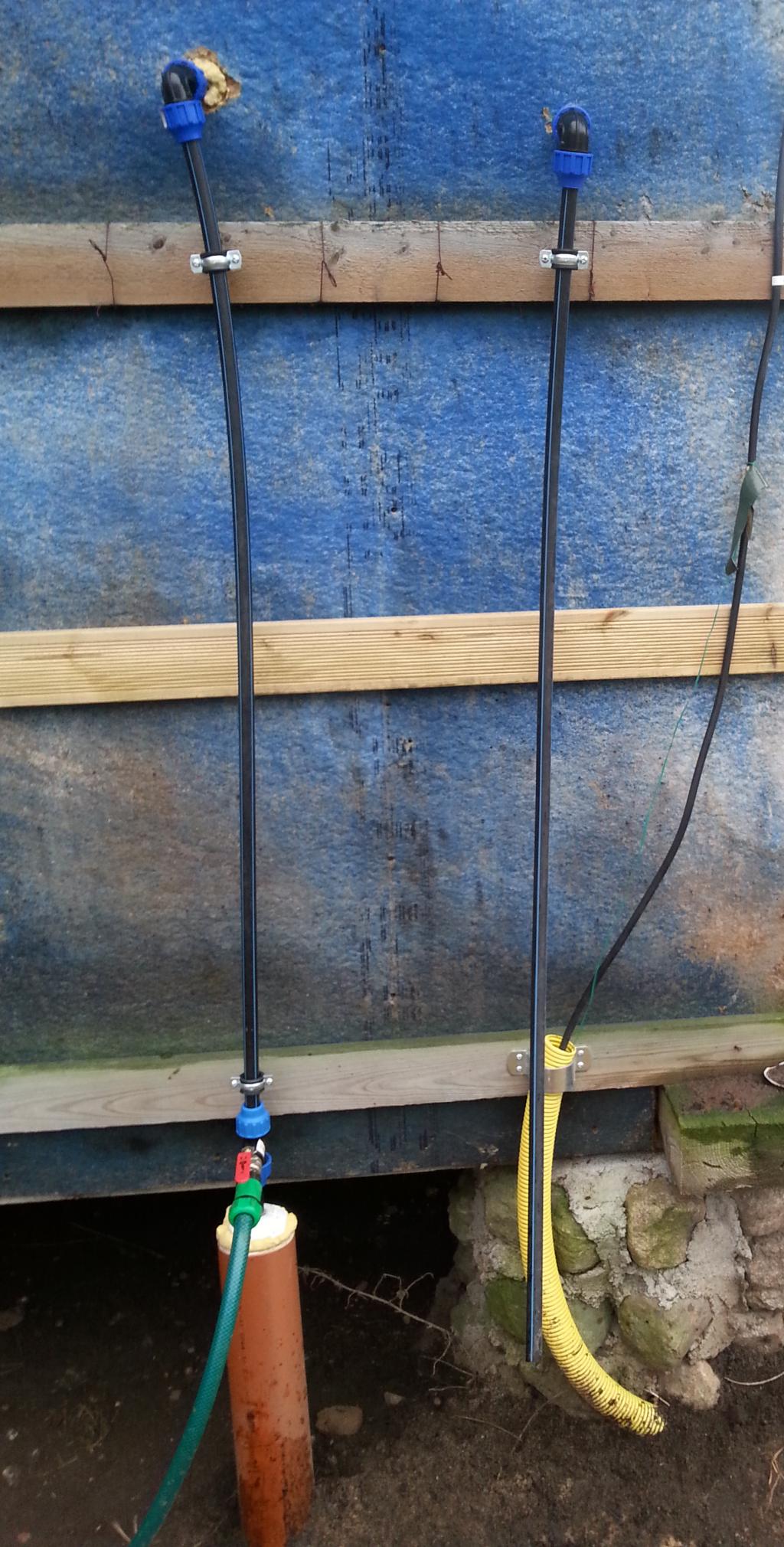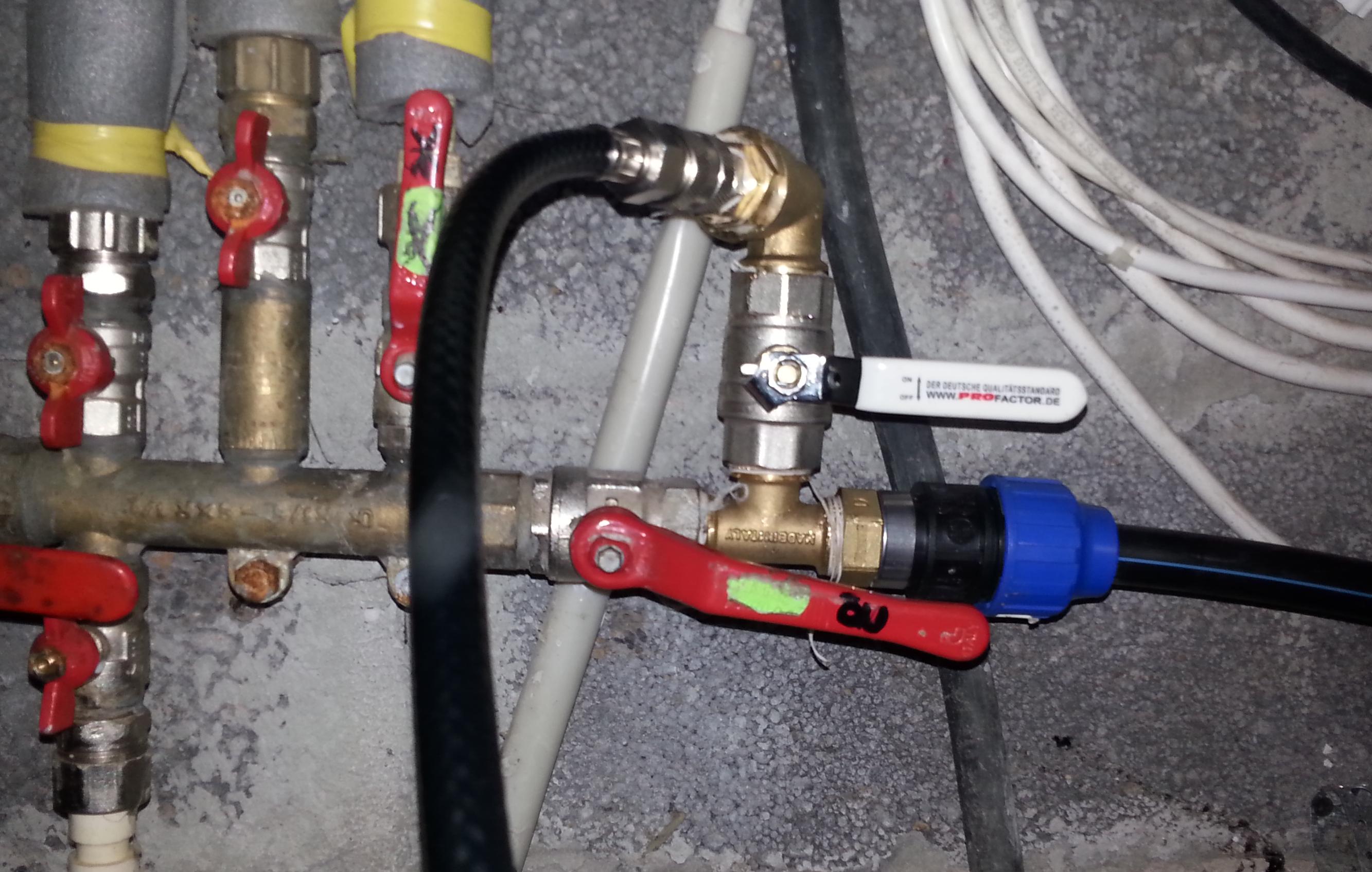Year-round water supply at the birdhouse
For comfortable duck raising it’s rather important to have a year-round usable water supply at the birdhouse. In addition to providing drinking water, we also have to clean up the trays that are below the drinking and eating bowls. In total this means that we need around 30l of water daily for activities related to duck keeping.
So far the water was supplied to the birdhouse via a garden hose which was connected to the main water supply at the house. The main problem with this setup was that in Estonia we usually have several months worth of days with temperatures below the freezing point and the hose wasn’t really usable under these circumstances.
The first winter we brought water from the house with buckets. That solution certainly worked but was also inconvenient. Next year I added a 300l water reservoir with a heating cable into the birdhouse. This allowed us to fill the reservoir when the weather was warmer and use it when it was cold. I also added automation that periodically changes the drinking water from the local reservoir.
The parts of the system that are inside the birdhouse look like this:

That solution was a lot more convenient but we still had a problem that from time to time the reservoir ran dry since we either forgot to refill it in time or it was below freezing point for so long that the hose never melted up.
This year we wanted to take the next step and rebuild the water supply in a way that would make mains water usable at the birdhouse even in the coldest of weathers.
At first the following usual solutions came to mind:
- dig the water pipe below the freezing point (in our case around 1.2m)
- insulate the pipe
- put a heating cable inside the pipe
- leave a small amount of water running when it’s cold
Each of these solutions had its pros and cons. For example in principle I certainly could dig it deep enough but for location specific reasons I would have to do it by hand. In addition I would still have to separately insulate or heat all of the outlets and outdoor collector.
Insulation turned out to be surprisingly costly (about 4 EUR/m). The birdhouse water pipeline is around 50m long so the insulation would have cost me around 200 EUR. I would have still had to add extra heating to some outlets where insulation alone wouldn’t have been enough.
50m of heating cable would have cost even twice as much and in addition there would have been running cost of electricity.
Leaving the water running should theoretically work but would be a waste of groundwater and would require constant monitoring of weather prediction and fiddling with the amount of water flow.
After thinking about it for a while I got the idea that there wouldn’t be a problem with freezing if there wouldn’t be anything that could freeze – the water pipeline has to be emptied after each use!
In general there are two ways to achieve this:
- suck the water out from one end with a pump
- push with a compressor from the point where the pipeline is joined to the main water pipeline
Pumping would have been a bit more complicated to set up so I decided to use compressor.
I dug the water pipeline (20mm PEM) 60-70cm below ground.
The part there it comes above ground and goes into the birdhouse looks like this:
 The pipe on the right is for graywater output.
The pipe on the right is for graywater output.
The main collector at our house looks like this:

The black hose above comes from the compressor, mains water comes from the left and the black pipe on the right goes to main garden collector. When we have finished using water outside we will close the supply from mains, open the valve that is outside the birdhouse and open the compressor valve for about a minute. The compressor is connected to the system with quick-connect fittings so it’s easy to use it for other purposes if needed.
So far this solution has worked rather well. One thing that bothers me a bit is that this valve configuration allows one to let compressor pressure into the mains line if valves are not opened in the right order which might break the pump. It would have been nice to make this physically impossible either by using a 3 way ball valve or a backflow prevention valve.